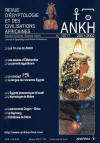|
ANKH n° 10-11,
2001-2002, pp. 144 - 163.

|
L'observation de l'Etoile Sirius
par les Dogon
Résumé : La
population des Dogon du Mali est célèbre dans le monde entier pour la splendeur de ses
masques, la beauté de son architecture, la richesse de son patrimoine social et culturel.
En Europe occidentale, et notamment en France, la délicatesse de leur civilisation nous
est connue en grande partie par le travail de deux ethnologues français, Marcel
Griaule et Germaine Dieterlen. Il est moins commun dans le cas de l'Afrique de
parler de science. Moins connu est donc peut-être l'article publié en 1950 par ces deux
chercheurs où est relatée la connaissance de l'étoile Sirius par les Dogon. Cette
publication a fait l'objet d'une vaste polémique car elle contient une énigme
scientifique. Le présent article rapporte les résultats d'une expédition "ethno-astronomique",
réalisée en 1998 dans la région de Sanga, en compagnie de Germaine Dieterlen. Les relevés
réalisés en différents lieux ont pu démontrer l'existence de sites astronomiques, formés
d'alignements, consacrés à l'observation de Sirius. L'existence de tels "observatoires"
en Afrique restitue ˆ ce continent sa place dans l'astronomie universelle et il est
fortement suggéré un lien probable avec la science ancienne égyptienne, dans la droite
ligne des travaux de Cheikh Anta Diop.
Abstract : The observation of Sirius star by the Dogons.
The.Dogon population of Mali is famous all over the world for
the magnificence of its masks, the beauty of its architecture, the richness of its social
and cultural inheritance. In Western Europe and particularly in France, the refinement of
its civilization is known to us mostly because of the work of two French ethnologists Marcel
Griaule and Germaine Dieterlen. It is less usual when Africa is concerned to
speak of science. Less known is thus, may be, the article published in 1950 by these two
researchers in which the knowledge of Sirius by the Dogons is related. This publication
has been subjected to a vast controversy because it contains a scientific enigma. The
actual article reports the results of an "ethno-astronomical" expedition carried
out in 1988 in the region of Sanga, in the presence of Germaine Dieterlen. The notes taken
down in different places were able to demonstrate the existence of astronomical sites
consisting in alignments dedicated to the observation of Sirius. The existing of such
observatories in Africa restores this continent to its place in the universal astronomy
and a probable link with the ancient Egyptian science is strongly suggested in the
straight line of the works of Cheikh Anta Diop.
|

